An industry staple and a true icon, meticulously modelled and updated with extra features. The Compressor is modelled on an iconic early 1960s T4 Opto Cell tube compressor/limiter, known for its smooth and warm sound. This compressor is especially effective on guitars, bass, and vocals, as it can gently enhance the quieter parts of a performance in a natural-sounding way.
Time

Use the Time control to change time it takes for the signal to become fully compressed and how fast it should recover from the gain reduction.
Compression
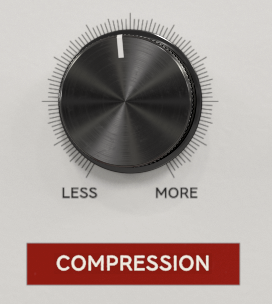
The Compression knob on this compressor works both as a gain control and a threshold control. If you increase the Input volume you will also increase the gain reduction, which makes it work sort of like a combination of a gain knob and a reversed threshold knob. You can drive the INPUT VU far into the reds without any unwanted digital clipping. Just make sure that the OUTPUT PEAK meter doesn’t indicate any clipping. (If it does, just lower the Output volume a bit.)
The Compression knob also works as a threshold control. More input gain will give you more gain reduction. If you drive the input volume so that the VU starts hitting the reds you will also add more distortion to the signal.
Sidechain Emphasis

To adjust the filter in the sidechain input to the compressor, use the Emphasis knob. When the knob is in its default position, the compressor's detector circuit responds to the full frequency range of the incoming signal. Turning the knob counterclockwise gradually filters out low frequencies from the sidechain, so that by the time it is turned fully counterclockwise, the detector is mainly triggered by high frequencies.
Gain reduction VU
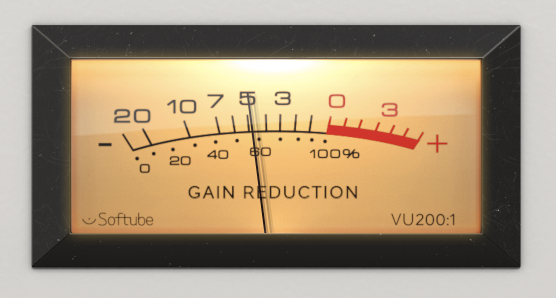
Compress/Limit
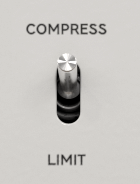
The Compressor has two modes of operation: Compress and Limit. In Compress mode, the gain reduction curve is softer and the compression ratio is lower. In Limit mode, the compression ratio is higher and the compressor behaves more like a limiter.
HF Make-Up
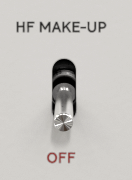
A common mix task is to compensate for a perceived high frequency loss caused by compression. With the HF Make-up we introduced a novel feature to reduce this phenomenon. When engaged, and when compression occurs, it will reduce the amount of high frequency compression in a dynamic way. It could be seen as a dynamic EQ, or multi-band compression, but is in fact more like a frequency dependent ratio, with slightly lower ratios for higher frequencies.
Sidechain Punch
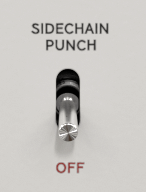
Adds a low-cut and high-boost equalizer to the audio signal that feeds the side-chain detector circuit. This is done to prevent low-frequency elements from dominating the action of the compressor, allowing mid- and high-frequency elements to have a greater influence on the compressor's behavior. This results in a more "punchy" sound with a stronger mid-range and well-balanced high frequencies.
Stereo Linked/Unlinked (Dual Mono)
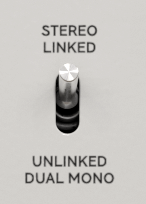
Normally, a stereo compressor will have the same amount of gain reduction on both channels, regardless of the difference of the channels. This is to, for example, avoid having the entire sound field tilt to the left when a loud sound is heard in the right channel. But for mastering purposes, and lower gain reduction amounts, it is often very useful to decouple these two channels in order to preserve a "depth" to the sound.
By engaging Link Channels, you'll get the "normal" stereo mode with linked gain reduction, as well as linked parameters. Set Link Channels to “off” and you get true, independent gain reduction.
External Sidechain
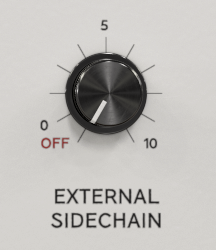
Engages the external sidechain input. Use the External Side Chain knob to set the input volume of the external signal (for instance the bass drum track). A higher input volume will lead to more gain reduction, just like the Input knob works without an external sidechain.
Output
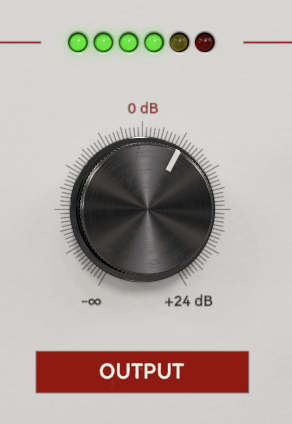
In comparison to the Compression knob, the Output knob doesn’t do much more than simply adjusting the output volume. Keep a close look on the OUTPUT PEAK meter while adjusting the output volume to avoid unwanted digital clipping. It is good practice to keep the levels below 0 dB, even if you are using a (native) host that allows level above 0 dB.
Drive

Sets the amount of drive applied to the signal.
Dry/Wet
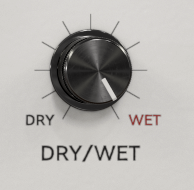
Controls the amount of dry and wet signal.
A whole range of added control can be accessed with Extended Features. Please see the separate "Extended Features" manual for more information.
Arvid Rosén, Oscar Öberg, Niklas Odelholm, Anton Eriksson and Fredrik Jansson – Modeling
Niklas Odelholm and Maxus Widarsson – Product concept
Niklas Odelholm – Graphic design
Maxus Widarsson – Product owner, manual, presets
Patrik Holmström – Framework programming
Johan Bremin – Quality Assurance
Ulf Ekelöf – 3D rendering